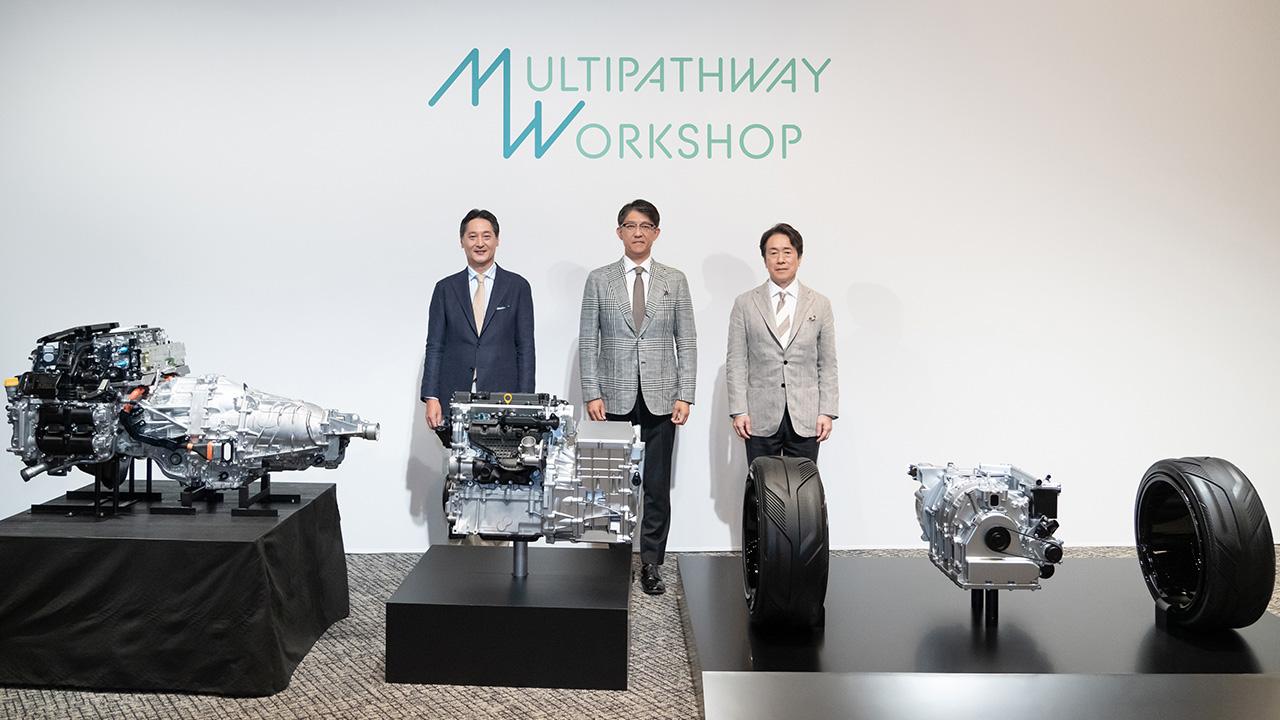
The three companies have long engaged in friendly rivalry over engines. Recently, their leaders came together to announce new developments for the electrification era.
“Devoting our energies to emissions compliance” Mazda President Masahiro Moro
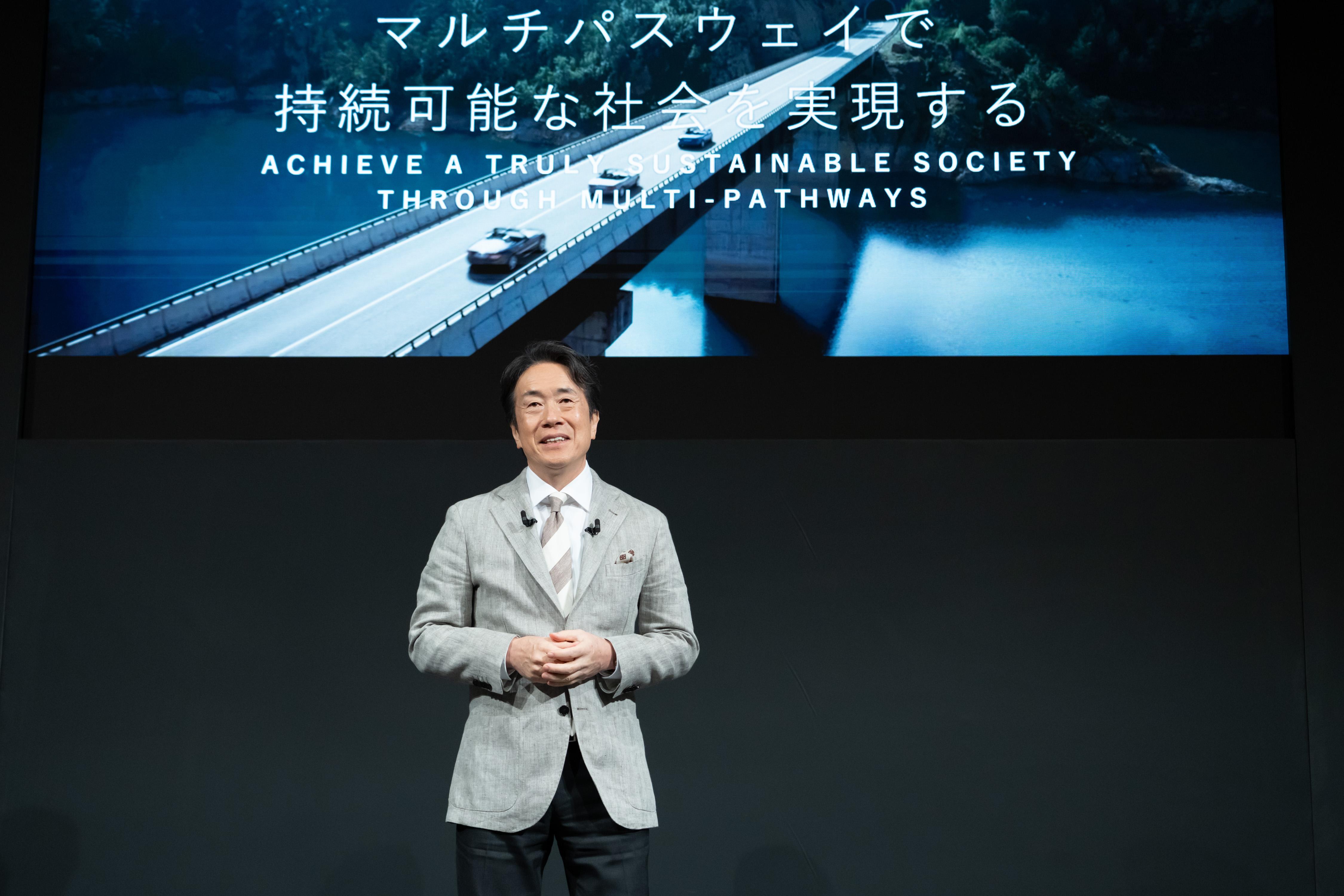
Thank you, Mr. Osaki. Hello everyone, I am Masahiro Moro from Mazda.
At the dawn of the auto industry's transformation into a mobility society, we believe in pursuing a multi-pathway approach to ensure a responsible transition toward true sustainability. We fully endorse the idea that internal combustion engines will play a key role in the age of electrification.
At the G7 Hiroshima Summit, we also conveyed the message that carbon neutrality should be pursued through a variety of options.
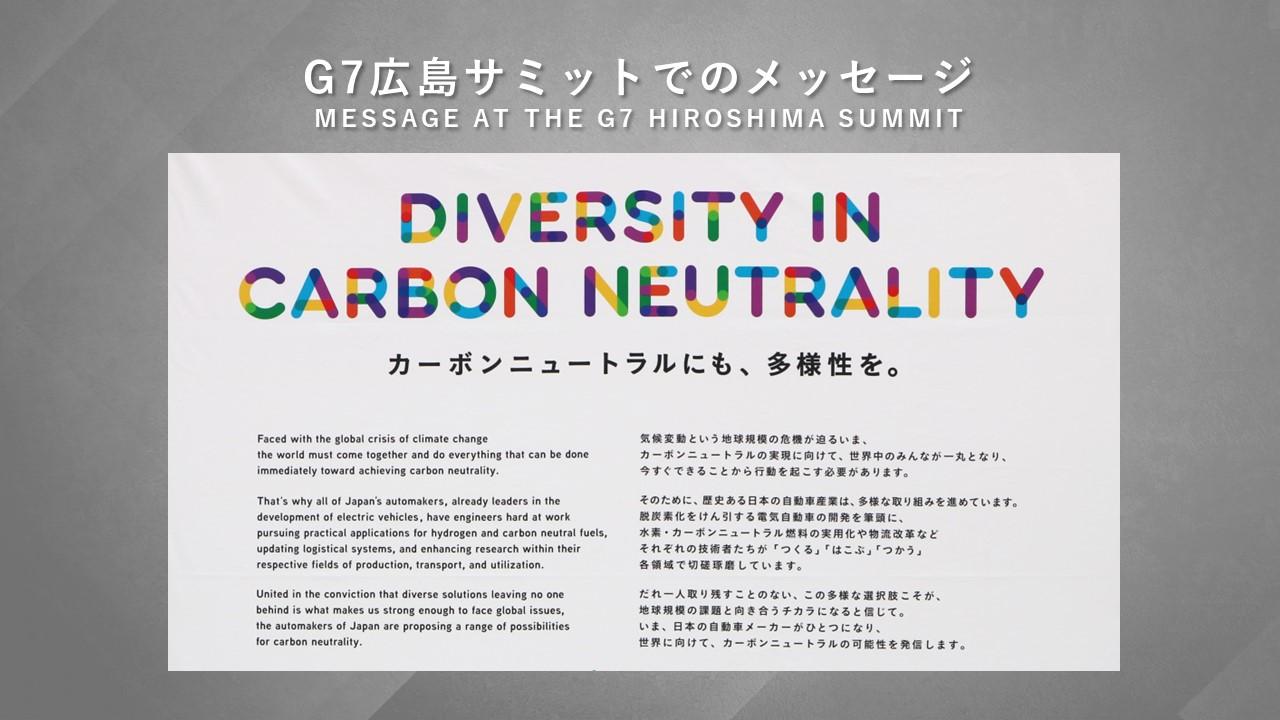
To realize this goal, we will continue to provide exciting vehicles for our customers by working together with like-minded partners in friendly competition and cooperation.
Since publishing our long-term technology vision in 2007, we have developed a multi-solution strategy based on the concept of lifecycle assessment, in which technology assets are arranged like building blocks.
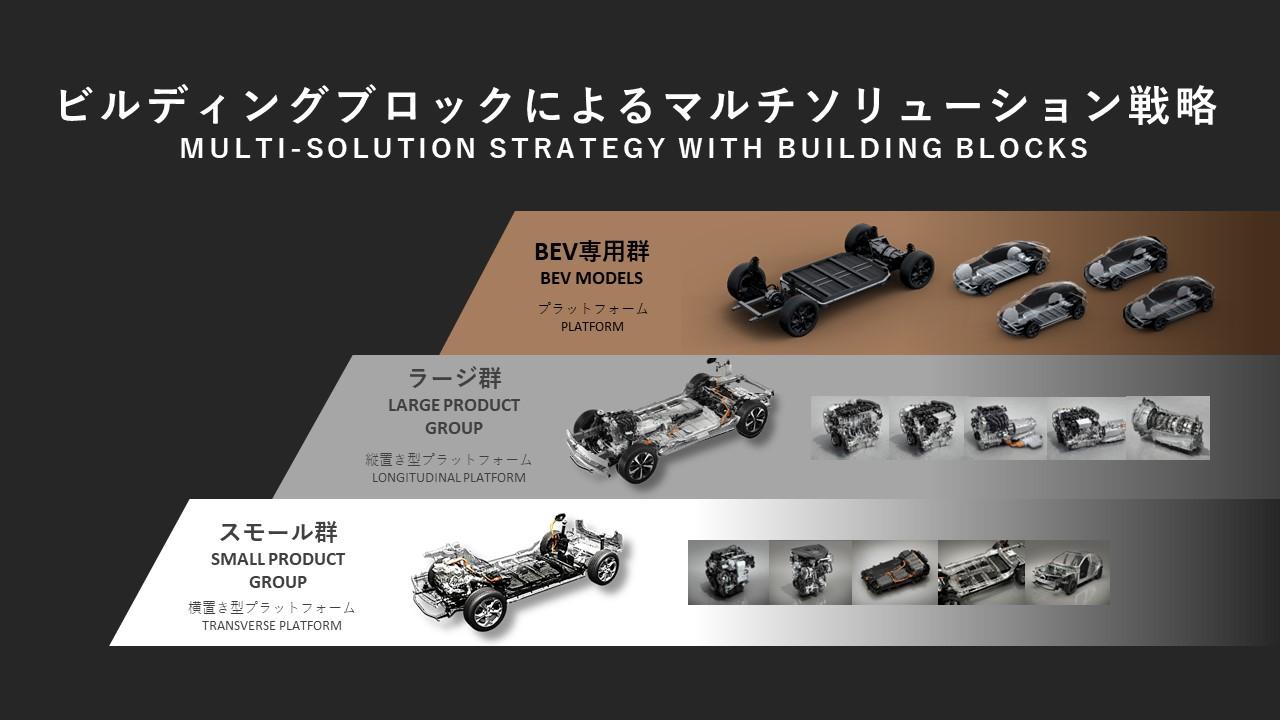
Right now, we are focused on lowering total CO2 emissions by combining internal combustion engines with electrified devices, as well as pursuing initiatives such as carbon-neutral fuels that target both new and existing vehicles. We believe it is crucial that we engage more customers in protecting the global environment by offering diverse solutions tailored to their needs, wants, and lifestyles.
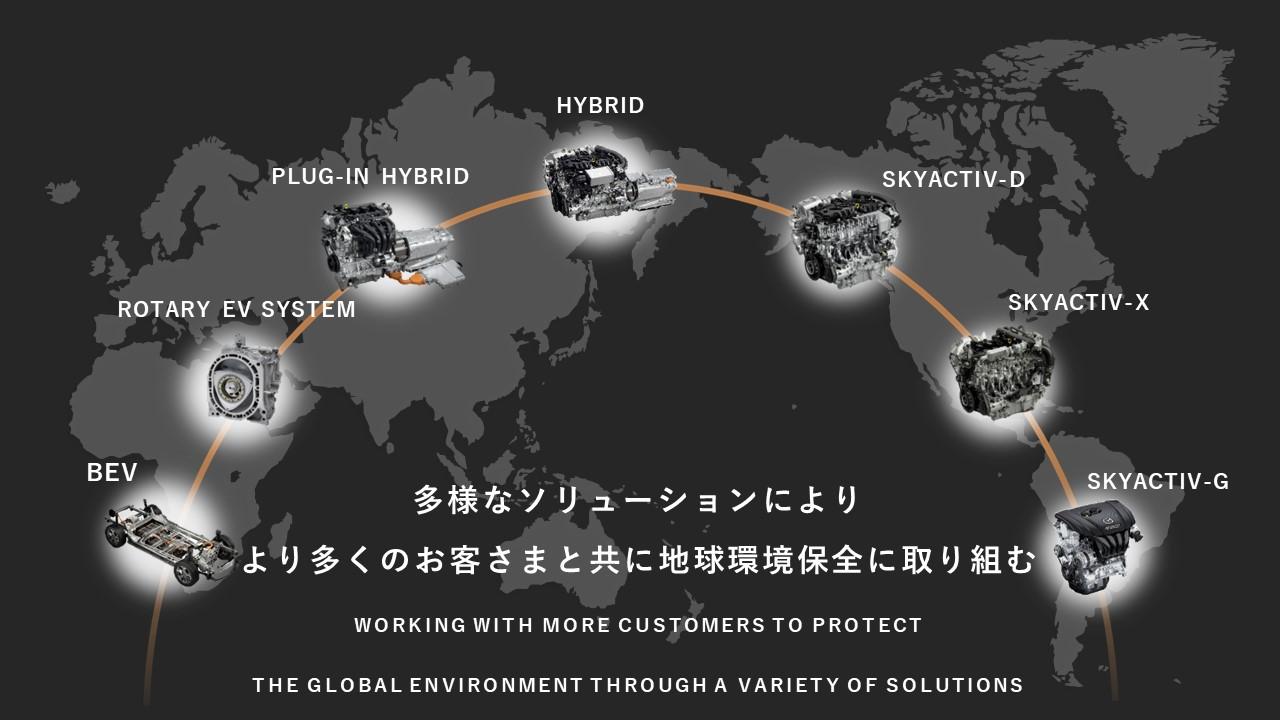
From this perspective, we strongly support the efforts announced yesterday by Idemitsu, ENEOS, Mitsubishi Heavy Industries, and Toyota Motor Corporation to speed up the adoption of carbon-neutral fuels in society through cross-industry collaboration. Mazda will also strive toward this objective.
Regarding today’s theme of internal combustion engines in the age of electrification, we have spent many years researching and developing our unique rotary engine.
From an early stage, we have explored the environmentally friendly potential of these engines, including burning hydrogen in the 1990s.
Rotary engines are compact and lightweight yet have high output. Their structural characteristics make them omnivores with respect to fuel.
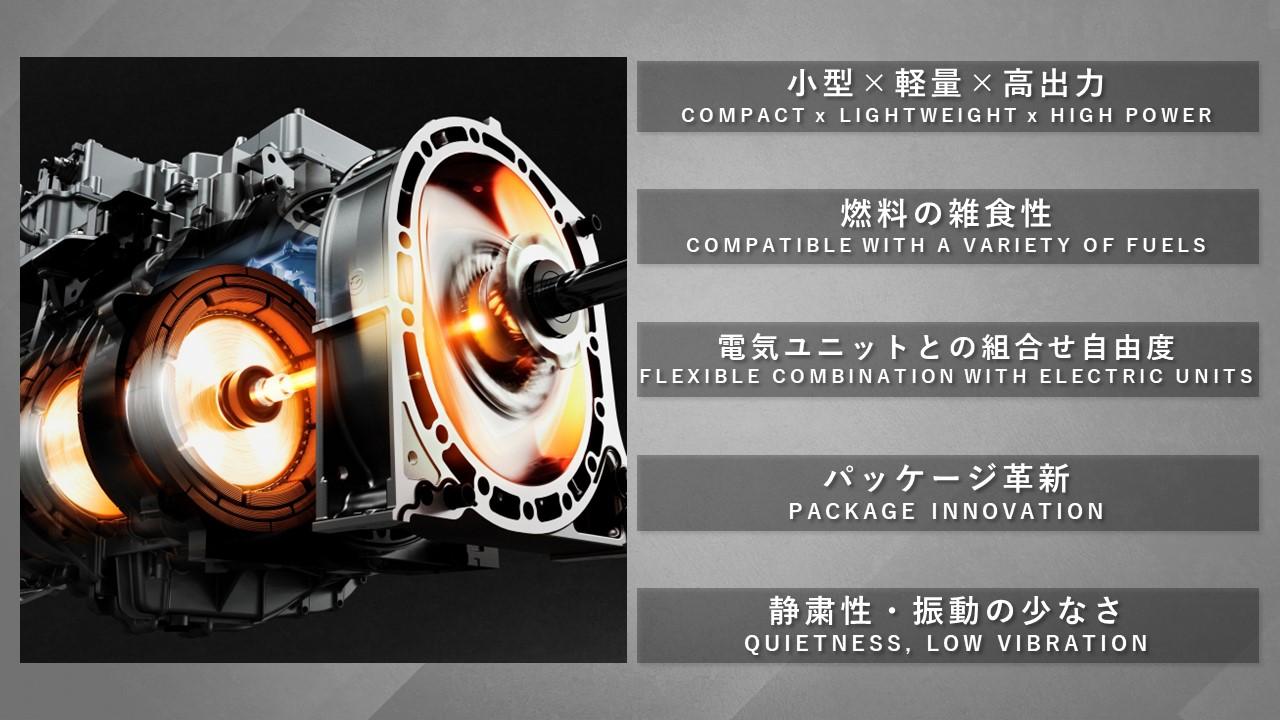
What’s more, though not widely known, their compact size and relative freedom in the layout of auxiliary parts allow for high space efficiency and easy mounting of electric devices, offering a great advantage for innovative packaging and design.
Added to this, the engine’s quietness and low vibration give it a singular value.
We believe that the rotary engine holds great potential for providing new value in the age of electrification, and we are devoting all our energies to overcoming the current challenge of emissions compliance for our rotary engines.
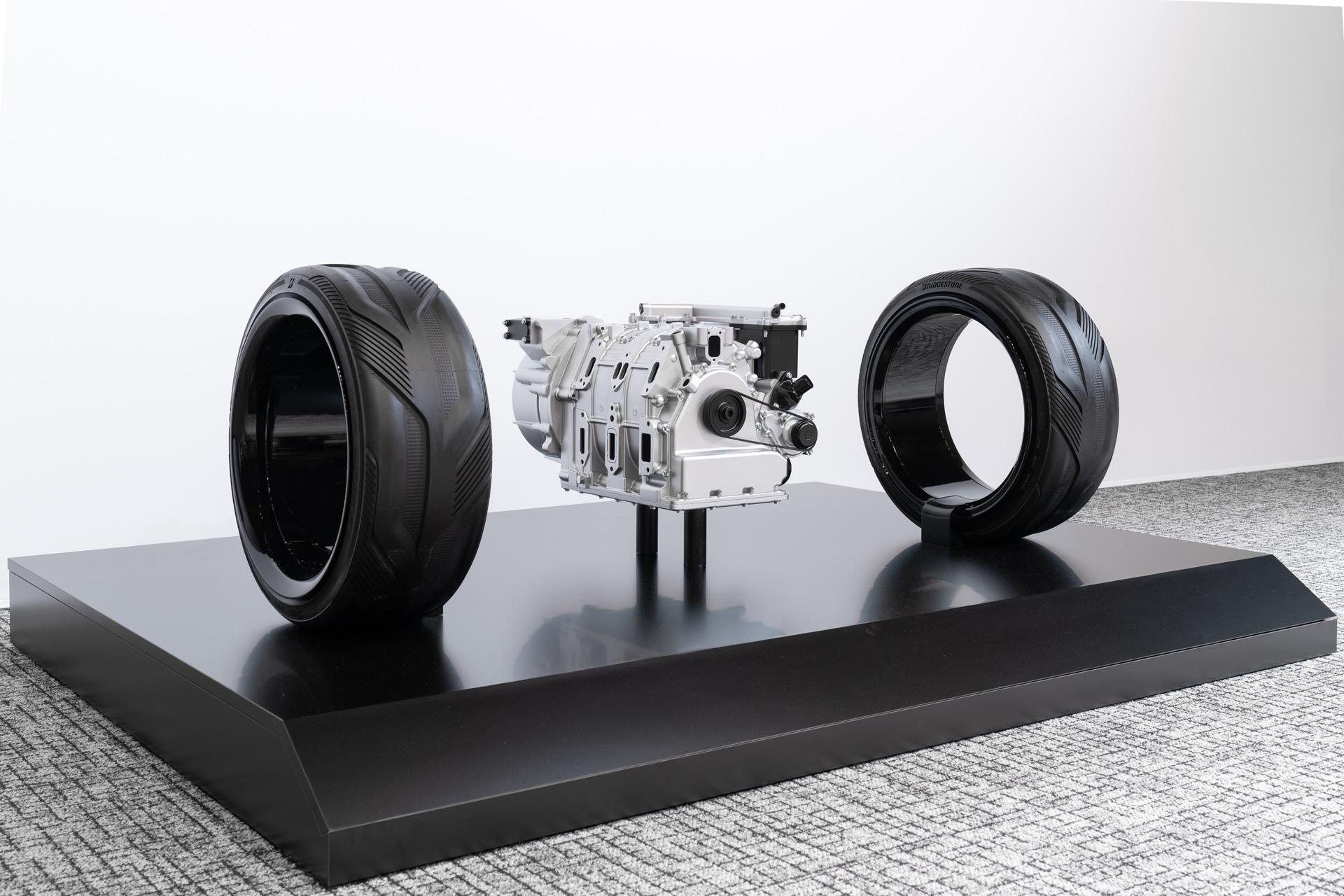
Our development aimed at emissions compliance holds the key to the future of internal combustion engines, and I am certain these efforts will prove to be fruitful.
If we can make this kind of learning a new area of collaboration, I believe we can hone the internal combustion engine as a core competency of Japan’s auto industry in the age of electrification and boost our competitiveness.
Finally, I view the rotary engine as synonymous with Mazda. I believe that our mission in this era is to make the rotary engine a technology capable of contributing broadly to society. We will continue working relentlessly to succeed in this challenge.
Now, to wrap things up, I would like to ask Mr. Sato and Mr. Osaki to join me on stage.
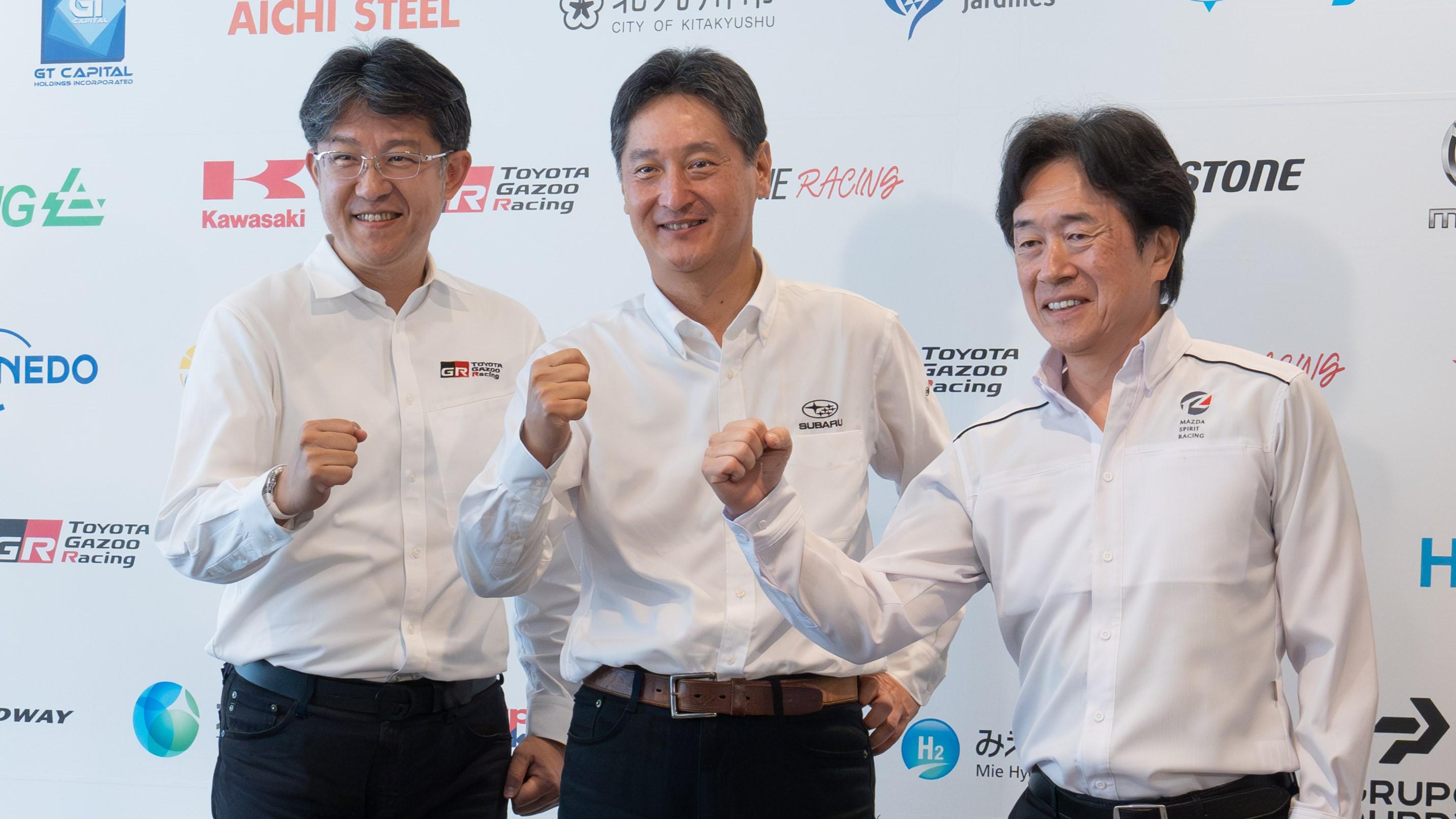
This picture was taken exactly one year ago at Fuji Speedway at our joint press conference. Today, I am thrilled to have this opportunity to come together once again and express the shared vision that we have cultivated with Mr. Sato and Mr. Osaki.
Through competition and co-creation, we will change the future of engines in the age of electrification.
We will expand our network of like-minded partners and work together in friendly rivalry, with a multi-pathway approach that leaves no one behind and ensures a responsible transition to a carbon-neutral society.
We hope that our passion and commitment will resonate with you through today’s workshop. Thank you.

